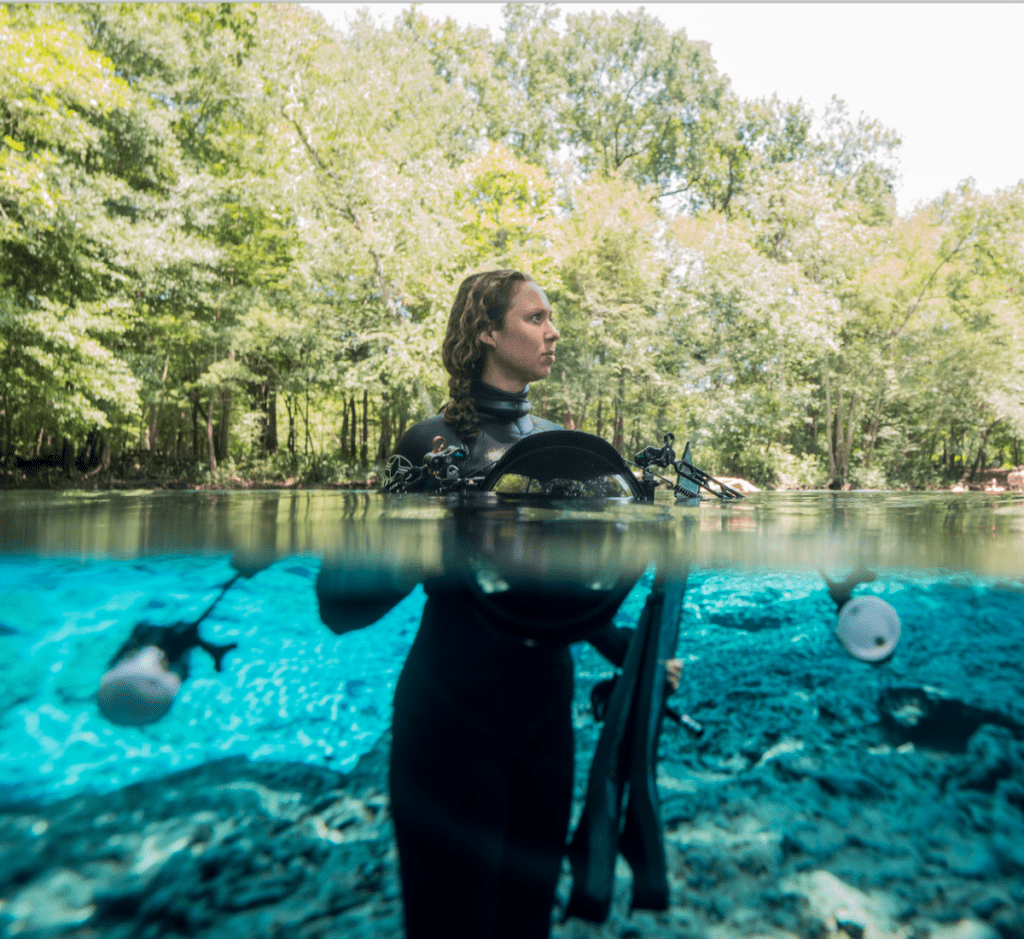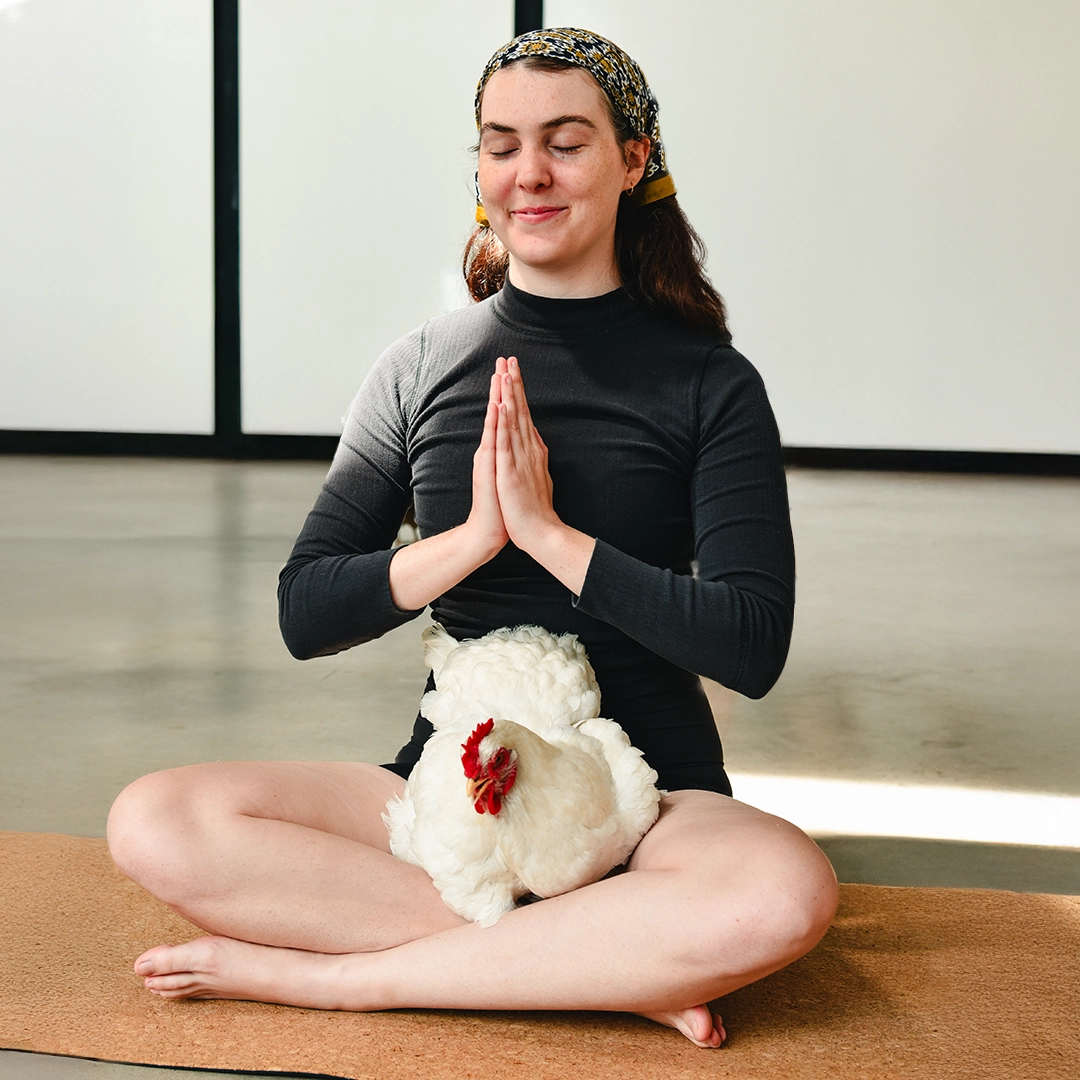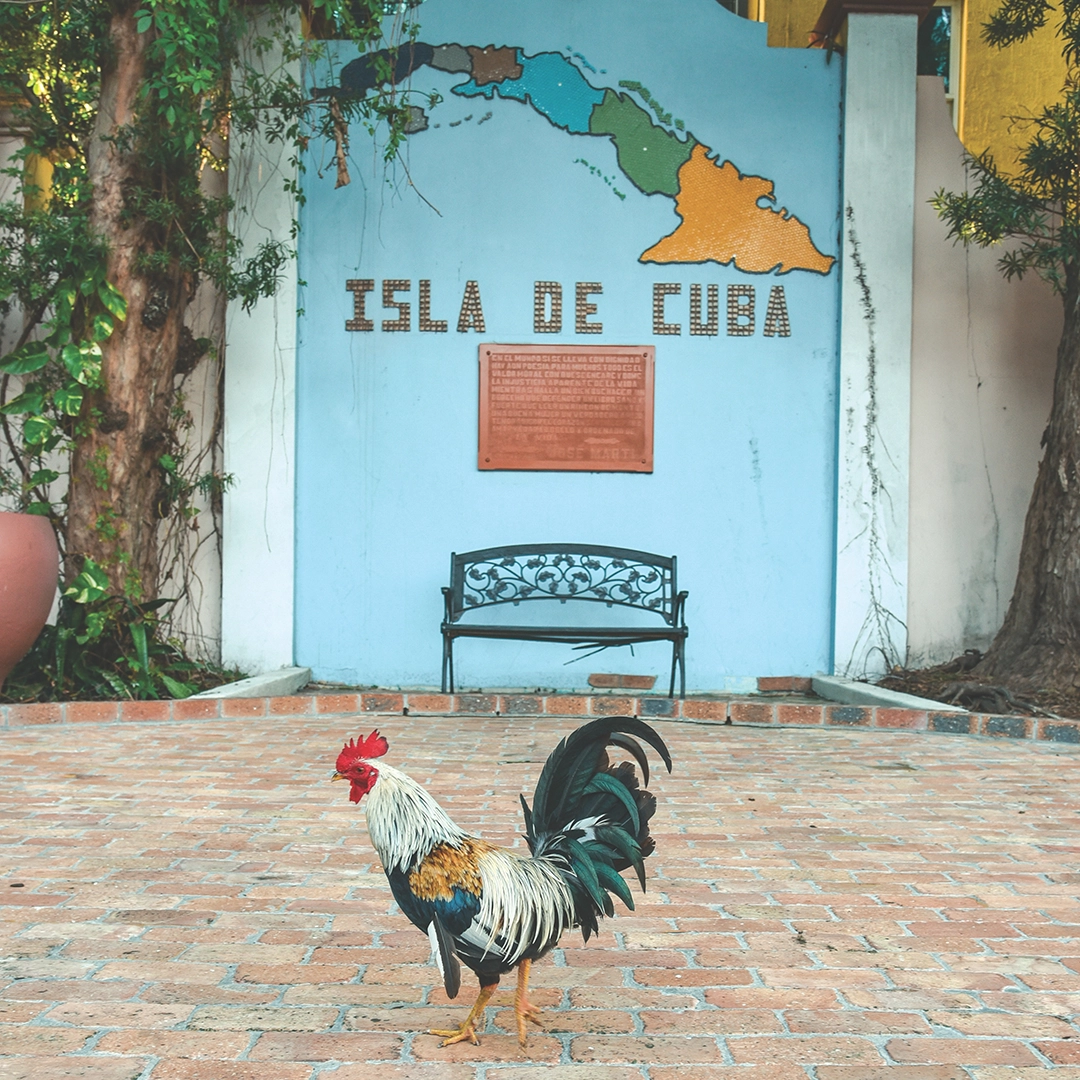by Jennifer Adler | August 6, 2024
Jennifer Adler’s Love Letter to Florida’s Freshwater Springs
Dive into underwater caves with ecologist and photographer Jennifer Adler.

The sea and I met before I could walk. She’s in every memory. As a kid, I didn’t think twice about spending hours swimming in the frigid Atlantic Ocean that turned my lips blue. Summer in northern Massachusetts meant no school but certainly not warm water. We didn’t care. The seaweed I now know as fucus, or rockweed, was, to us, mermaid’s hair. Periwinkles and mussels studded the rocks, and hermit crabs scurried across the sandy bottom of Sand Dollar Cove. I never wanted to leave this salty world.
Growing up, I gave little thought to freshwater, only the ocean. As a marine biology major and competitive sailor at Brown University, unsalted water was only something I drank and showered in to regain body temperature after windy winter regattas. It wasn’t until I moved from New England to Florida in 2011 that I gave freshwater any thought. And only by necessity.
After graduation, I took a job as a biologist at the U.S. Geological Survey (USGS) Southeast Ecological Science Center in Gainesville. In my mind, Gainesville would be similar to how I remembered the Sunshine State on my first visit in third grade: sunny, sandy beaches lined with palm trees. My sister and I collected shells in front of our flamingo motel on Clearwater Beach and swam on our bellies behind my mom as she cleared the way via stingray shuffle in the Gulf’s warm, brown waters. Unfortunately for me, Gainesville was upwards of an hour from both Gulf and Atlantic coast beaches and has more live oaks and pines than palm trees. Not quite the tropical southern paradise I had pictured.
My Florida is not the stereotypical one depicted on postcards or Disney vacations—it’s better.
—Jennifer Adler
This move to the center of Florida occurred in the dead of summer, so the lack of beaches was both disappointing and uncomfortable—especially for a marine biologist. I was miserably hot and homesick. A sympathetic coworker suggested I check out the springs—a desperate Google search led me to the most crowded and chaotic spring, but back then I only noticed the water, not the people. As I pulled my mask and snorkel over my head and immersed in the spring, the world went quiet. The visibility was endless, like swimming in air—it truly feels like you’re flying. I have since swam in the waters surrounding every continent, and nothing compares.
More than 1,000 freshwater springs dot Florida’s karst landscape, each one a direct connection to the underlying aquifer. The limestone that makes up the aquifer used to be coral reefs, the base of a shallow sea millions of years ago. It’s porous, like Swiss cheese. The holes of the limestone, which range from tiny pores to mega tunnels large enough to fit a Boeing 747, hold freshwater, which makes up the aquifer. This is the main source of drinking water for more than 90 percent of Floridians, but the concept of an aquifer tends to be abstract and is out of sight, out of mind for most people, unless you’re a cave diver.
After about a year in Florida, a smiling, gray-bearded man named Harry Averill found me snorkeling over a wreck at Troy Spring State Park in about a foot of water. My parents had gifted me a book of Florida dive sites, and I was making my way through the list of freshwater spots, not realizing how much river levels dropped during the dry season. Turns out Averill was one of the OG cave divers in Florida and, instead of ignoring me as I snorkeled in water where I could easily stand, he thought my tendencies for swimming in odd places would bode well for cave diving, so he introduced me to the winding passageways of the aquifer.
The caves are completely dark. In underwater photos, there are often upwards of 10 lights illuminating a passageway or cavern. During cave diver training, I quickly learned I had not experienced darkness until I swam in the limestone tunnels beneath Florida. In the caves, the beam of light atop your hand is the only thing that illuminates your path forward. Everything else is black. There are no cars, no phones, no planes, no wind, no stars, no streetlights, no distractions. The only sound is your own bubbles as you exhale. They escape up by your ears and form reflective pockets on the ceiling of the cave or filter through vertical cracks, creating a thunder-like boom as they gently rise to the surface. Despite their dark and scary reputation, underwater caves are one of the most peaceful places on the planet.

The springs and caves were the reason I first picked up an underwater camera. Words couldn’t describe the feeling of being there, and my entire family lived 1,000 miles away, so I began swimming, scuba diving and documenting the springs to share my wonder. At first, I took a ton of terrible photos, but over time, with hours, days, weeks, months and years of practice, as well as reading and research, my photos improved. At the same time, I immersed myself in the local freshwater conservation and research communities, which led me to pursue a Ph.D. studying the springs at the University of Florida in Gainesville, where I had initially been so eager to escape.
In “A Sand County Almanac,” author Aldo Leopold describes being an ecologist as the most depressing profession. “One of the penalties of an ecological education is that one lives alone in a world of wounds,” he writes. “Much of the damage inflicted on land is quite invisible to laymen. An ecologist must either harden his shell and make believe that the consequences of science are none of his business, or he must be the doctor who sees the marks of death in a community that believes itself well and does not want to be told otherwise.” I fell in love with the springs for their magic and beauty, but, as an ecologist, I soon enough learned that they’re threatened.
During the decade I spent in the state, Florida overtook New York to become the third most populous state in the nation. That population growth, along with over-pumping from the aquifer, pollution and flooding from massive hurricanes, altered the springs’ ecosystems—springs that were once full of water as clear as air and underwater meadows flowing with vibrant, green native grasses became brown and overrun by nuisance algae. I documented it all with my camera.



Ruth B. Kirby Gilchrist Blue Springs became Florida’s 175th state park in 2017, but the previous owner, Kim Davis, used to give me and my friend Danielle the gate code so we could come in at sunrise to swim down the now-closed spring run, where the water flows from the spring basin out to the river, to photograph the native grasses and turtles. After hours of underwater exploration and photography, I would emerge like the Gill-man from the “Creature from the Black Lagoon” in my wetsuit and wrinkled fingers as bikini-clad tourists stared. Those are my favorite memories, especially in the winter when the 72-degree water would steam on subfreezing north Florida mornings. Davis, and so many others in the springs community, are the reason I stayed in Florida for 10 years instead of 10 months.
The visual differences between the springs and ocean had another advantage—my work as a new photographer stood out from those focused on coral reefs and charismatic megafauna. While the springs do have manatees in the winter, often the clear water mixing with the tannic river water was enough to catch an editor’s or funder’s eyes. At the time, I also learned to write from environmental journalist Cynthia Barnett, who was one of my Ph.D. advisers and my adopted Florida mom and mentor. She would leave the sweetest, deep red Florida-grown watermelons—my favorite food—on my doorstep during long days of writing and encourage me when I thought I would never finish my dissertation. She told me I would one day come to appreciate a good editor, and that day came the moment I left Gainesville and her guidance.
During graduate school, I blended science with journalism and communications and learned the power of photography to reach people in ways that statistics and science cannot: through emotions. It’s been seven years since I finished grad school—the day I submitted my dissertation, I became a freelance photojournalist and writer. I’ve traveled to every continent to report stories about science and conservation, but it all started with the springs and the brilliant scientists, storytellers, conservationists and artists they attract.
Since I arrived in Florida in 2011, the springs have become increasingly popular and overcrowded. The locals’ secret is to go in the winter—the water is the same temperature year-round, although the air temperature does dip below freezing. The second secret is to always bring a mask or you’ll miss the magic. My Florida is not the stereotypical one depicted on postcards or Disney vacations—it’s better. To experience it, you just have to drive into the forest and jump in.





